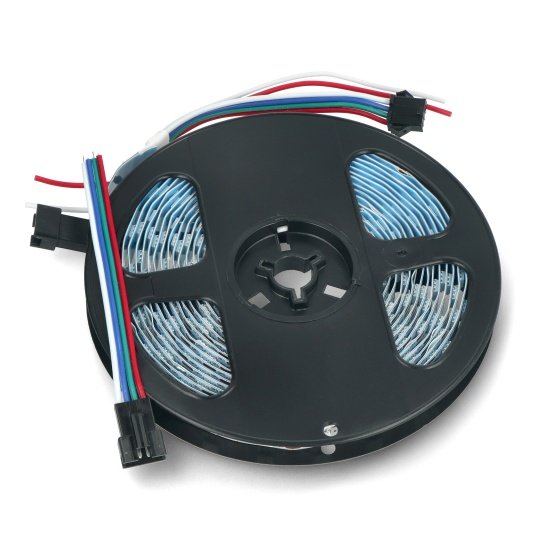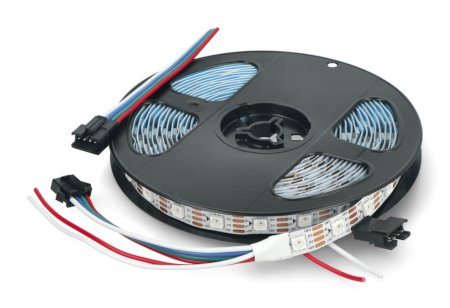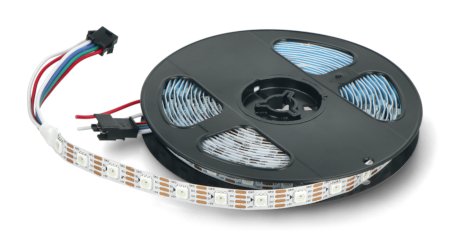RGB LED strip description WS2813 - digital, addressable - IP30 60 LED/m 18W/m, 5V - 5m
Individually addressable RGB LEDs housed in a 5 metre strip with a density of 60 LEDs per metre. Each pixel can emit a colour from a 24-bit palette. The diodes are densely arranged at a distance of about 11 mm, so the brightness is high. The chip is powered by 5 V, consumes about 3.6 A per meter (18 W). The chain has the ability to cut after each diode.Product compatible withArduinoandRaspberry Pi
- Arduino library on GitHubfor NeoPixel modules along withconnection examples,
- Example of connectionwith Raspberry Pi along with code.
Connection
The LED strip has a 4-pin connector consisting of the following leads:
- GND (white lead) - module ground
- 5 V (red lead) - supply voltage, each meter of the stripe requires a source with current capacity of at least 3,5 A
- D0 (green lead - data) - digital control signal from the microcontroller
- B0 (blue cable - clock) - digital control signal from the microcontroller - connected according to the needs of the program
RGB LED strip specification WS2813 - digital, addressable - IP30 60 LED/m 18W/m, 5V - 5m
- Supply voltage: 5 V
- Power: 18 W/m
- LEDs used: RGB LED SMD5050 WS2813
- Addressed pixel: 1 RGB diode
- Resistance to external conditions: IP30
- Chain length: 5 m
- Chain width: 10 mm
First start-up - ColorPalette example
-
Run the test program by selecting in the Arduino environment:
- File -> Examples -> FastLED -> ColorPalette
-
Select the pin from which diodes will be controlled. By default it is pin 5:
- Line 3 #define PIN 5
-
Select the number of pixels to be controlled. The default is 50:
- Line 4 #define NUM_LEDS 50
-
Select the brightness of the LEDs, default is 64:
- Line 5 #define BRIGHTNESS 64
-
Select type of LED driver, default is WS2811
- Line 6 #define LED_TYPE WS2811
- Upload the program to the Arduino. The pixels should all light up and change colors from the color palette

















































































































































































































































































































































